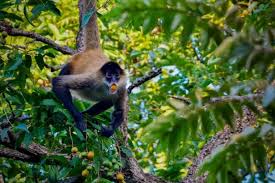Wild Animals and Ethanol: A New Perspective on Natural Consumption

While anecdotes of wildlife appearing 'drunk' after consuming fermented fruits are common, ecologists are challenging the long-held belief that nonhuman consumption of ethanol is rare and accidental. In a review published in *Trends in Ecology & Evolution*, researchers argue that ethanol, which is naturally present in nearly every ecosystem, is likely consumed regularly by most fruit- and nectar-eating animals.
Behavioral ecologist and senior author Kimberley Hockings from the University of Exeter explains, "We're moving away from this anthropocentric view that ethanol is just something that humans use. It's much more abundant in the natural world than we previously thought, and most animals that eat sugary fruits are going to be exposed to some level of ethanol."
Ethanol became prevalent around 100 million years ago, coinciding with the emergence of flowering plants that produce sugary nectar and fruits amenable to fermentation by yeasts. Although ethanol is present in various ecosystems, its concentration is typically higher and more consistent in lower-latitude, humid tropical environments than in temperate regions. Natural fermentation of fruits often results in alcohol content of only 1%-2% ABV, but concentrations as high as 10.2% ABV have been recorded in overripe palm fruit in Panama.
Interestingly, animals already possessed genes capable of degrading ethanol before yeasts began producing it, and there is evidence of evolutionary adaptation among mammals and birds that consume fruit and nectar, particularly in primates and treeshrews, who metabolize ethanol efficiently.
From an ecological standpoint, becoming inebriated poses risks for animals that climb trees or face predators, which stands in contrast to humans who often seek intoxication without the caloric intake. Molecular ecologist Matthew Carrigan of the College of Central Florida notes, "It's the opposite of humans who want to get intoxicated but don't really want the calories—non-human animals want the calories but not the inebriation."
The research raises questions about whether animals intentionally seek ethanol, as further investigation is needed to determine its effects on animal physiology and evolution. Nonetheless, the team posits several potential benefits of ethanol consumption for wildlife. Ethanol serves as a calorie source, and the odorous compounds generated during fermentation may help animals locate food, although it’s improbable that animals can detect ethanol itself.
Ethanol may also confer medicinal advantages: fruit flies have been observed to lay eggs in ethanol-rich substances to protect against parasites, and larvae increase ethanol intake when parasitized by wasps. Behavioral ecologist and first author Anna Bowland highlights the cognitive aspects, suggesting that ethanol might stimulate the endorphin and dopamine systems, fostering relaxation and potentially enhancing social behaviors.
"To test that, we'd really need to know if ethanol is producing a physiological response in the wild," Bowland adds. With many questions still unanswered regarding the significance of ethanol consumption in wild animals, the research team aims to investigate its behavioral and social implications, particularly in primates, and to delve deeper into the enzymes involved in alcohol metabolism.
This research was supported by various organizations, including the Primate Society of Great Britain and the Natural Sciences and Engineering Research Council of Canada.
Story Source:
Materials provided by Cell Press. The original text of this story is licensed under a Creative Commons License. Note: Content may be edited for style and length.
Journal Reference:
- Bowland et al. The evolutionary ecology of ethanol. Trends in Ecology & Evolution, 2024 DOI: 10.1016/j.tree.2024.09.005

0 Comments